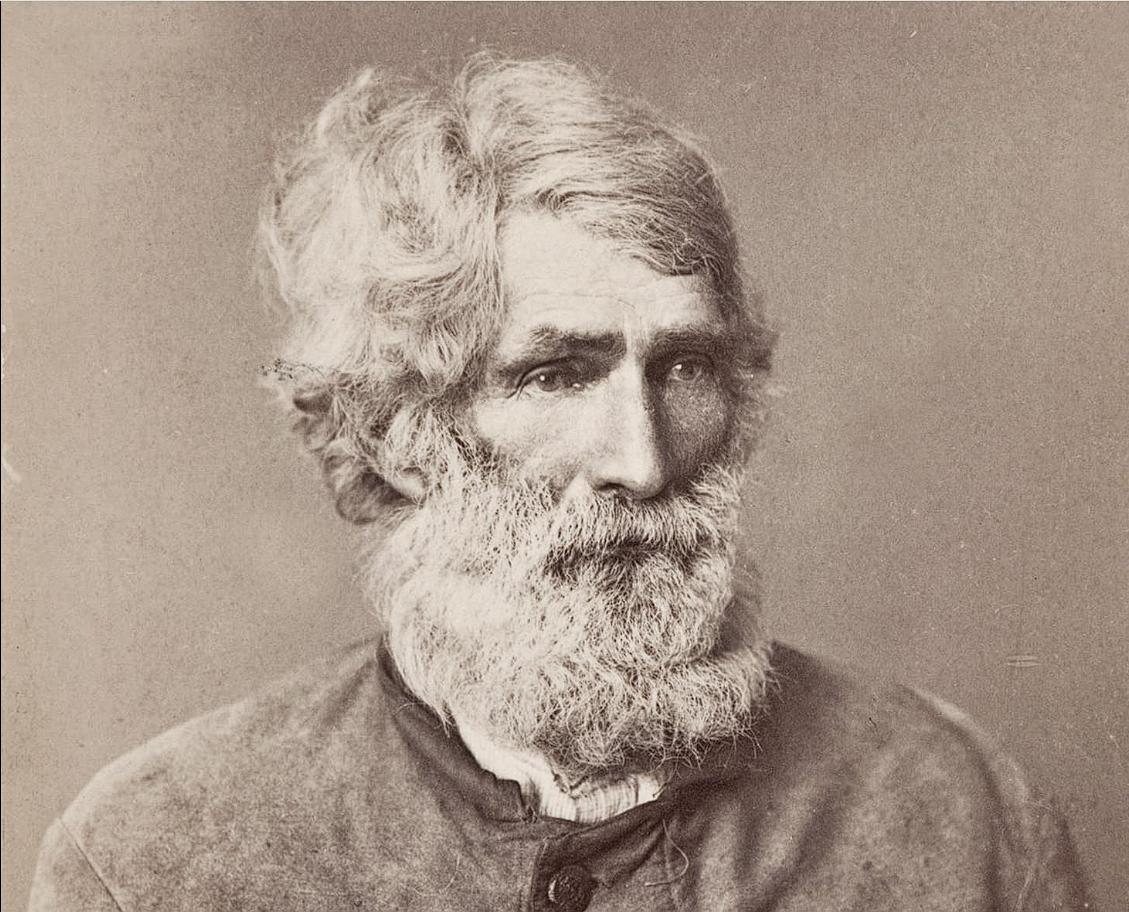Behold the remarkable visage of William A.A. “Bigfoot” Wallace—a name that resonates through the annals of the American West, synonymous with the rugged spirit of the Texas Ranger, the keen eye of the frontier scout, and the larger-than-life persona of a living legend. He rode into the untamed territories of Texas in the year 1837, a time when the land was a crucible forging heroes and tall tales, and he rode into the pages of history not long after, swiftly becoming one of the boldest, most colorful, and undeniably unforgettable figures of the American frontier. And like any truly gifted raconteur, a spinner of yarns whose words could paint vivid pictures of a wild and unpredictable land, Bigfoot Wallace never allowed the often-mundane constraints of strict factual accuracy to stand in the way of a truly great story—one that would be recounted around campfires for generations to come, growing ever more embellished with each telling.

The Legend of the Nut-Armor: A Tale Woven from Frontier Ingenuity and Audacity
Here is one of his most enduring and utterly unforgettable yarns, a testament to his quick wit, audacious spirit, and unparalleled talent for storytelling, told, as best as it can be recalled, in his own distinctive, colorful vernacular:
“One night, after a long day in the saddle, I finally made it back to my humble shack, weary as a hound dog after a week-long chase. I tied up my trusty horse, ol’ Paint, for the night and figured I’d get some much-needed shut-eye. But right off the bat, somethin’ felt… off. My dogs, them loyal critters, wouldn’t stop their low, mournful whinin’—always a sure sign in them that trouble was brewin’ nearby. Trustin’ their keen instincts, honed by more nights under the Texas stars than I could count, I cautiously peered out through the narrow portholes of my shack, tryin’ to make out anythin’ movin’ in the darkness. But nary a shadow stirred. Still, that gut feeling, the kind you learn to heed out on the frontier, it gnawed at me somethin’ fierce: there were Indians about, I just knew it.”
“I spent the rest of that long, uneasy night like a man possessed, frantically meltin’ down lead and moldin’ bullets by the dim light of my lantern. Come mornin’, with the first pale streaks of dawn paintin’ the sky, I stepped out of my shack with the caution of a seasoned wolf approachin’ a trap. And there it was, plain as day and twice as gut-wrenchin’: all my prized horses, my loyal companions on the trail, had been clean stolen. The sturdy corral fence, the one I’d built with my own two hands, lay cut open in the dead of night, a silent testament to the stealth of the thieves. Now, Bigfoot Wallace ain’t one to take such a loss lyin’ down. Determined to get my horses back, I picked up their trail, followin’ the tell-tale signs across the dusty ground until I finally spotted a thin column of smoke curlin’ lazily above a thick stand of hickory trees in the distance.”
“Now, here’s where this here tale takes a turn for the truly legendary, the kind o’ story folks still talk about around campfires from the Red River down to the Rio Grande. The forest floor beneath them hickory trees was just plumb covered, I tell ya, with hickory nuts, thick as fleas on a stray dog. And in a flash of pure frontier ingenuity, the kind o’ thinkin’ that separates the quick from the dead out in the wild, an idea struck me like a bolt o’ lightnin’. I started stuffin’ them hard hickory nuts down my pants and shirt, crammin’ ’em in tight until I was practically wrapped in a makeshift suit o’ nut-armor, two, maybe even three inches thick all the way ’round. I was near ’bout immobile, movin’ like a turtle caught in molasses, and lookin’, I reckon, ‘like a giant,’ a walkin’, talkin’ mountain o’ hickory. But desperation’s a powerful motivator.”
“Slow and steady, I crawled through the high grass, inchin’ my way towards the enemy camp, keepin’ low as a snake in tall weeds. Finally, I spotted two warriors standin’ near the cracklin’ fire, their backs to me, likely figurin’ they were safe as could be. I raised my old smoothbore rifle, Betsy she was called, took careful aim, and dropped one of ’em with a single, well-placed shot. As the camp erupted into a pure hornet’s nest o’ chaos and confusion, with yelps and shouts fillin’ the air, I kept low to the ground, frantically reloadin’ Betsy and firin’ again. Arrows started whizzin’ past, thick as rain in a Texas storm, but every single one o’ them pointy devils bounced harmlessly right off my thick hickory nut armor, clatterin’ to the ground like hail on a tin roof. With my twin revolvers, them trusty six-shooters, drawn and ready, I returned fire in a runnin’ battle, movin’ as fast as my nut-encased legs would carry me, eventually scatterin’ them surprised varmints and recoverin’ every single one o’ my precious horses.”
“They must have thought I was the very devil himself,” Bigfoot Wallace would often chuckle, a twinkle in his eye as he recounted this improbable tale. “A giant made o’ nuts, unstoppable and unbreakable.” And in that particular moment, packed to the gills with hickory nuts and a whole heap o’ frontier grit, maybe, just maybe, he truly was.
Bigfoot Wallace didn’t just live through the wild and untamed frontier of the American West—he embraced its chaos, survived its dangers with a unique blend of cunning and courage, and, most importantly, he undeniably made it wilder, one outrageously entertaining story at a time, forever solidifying his place as a true legend of the Lone Star State.
